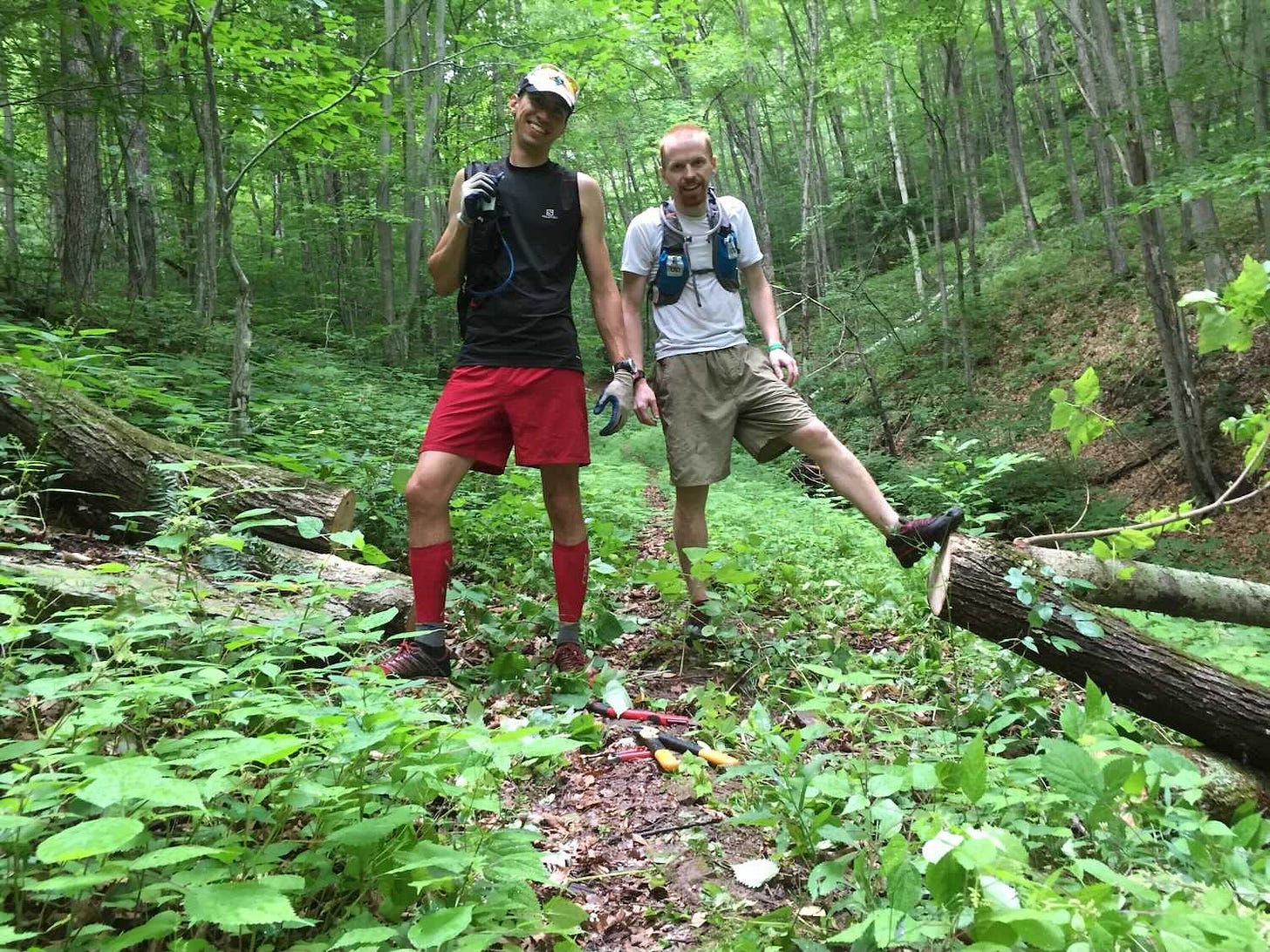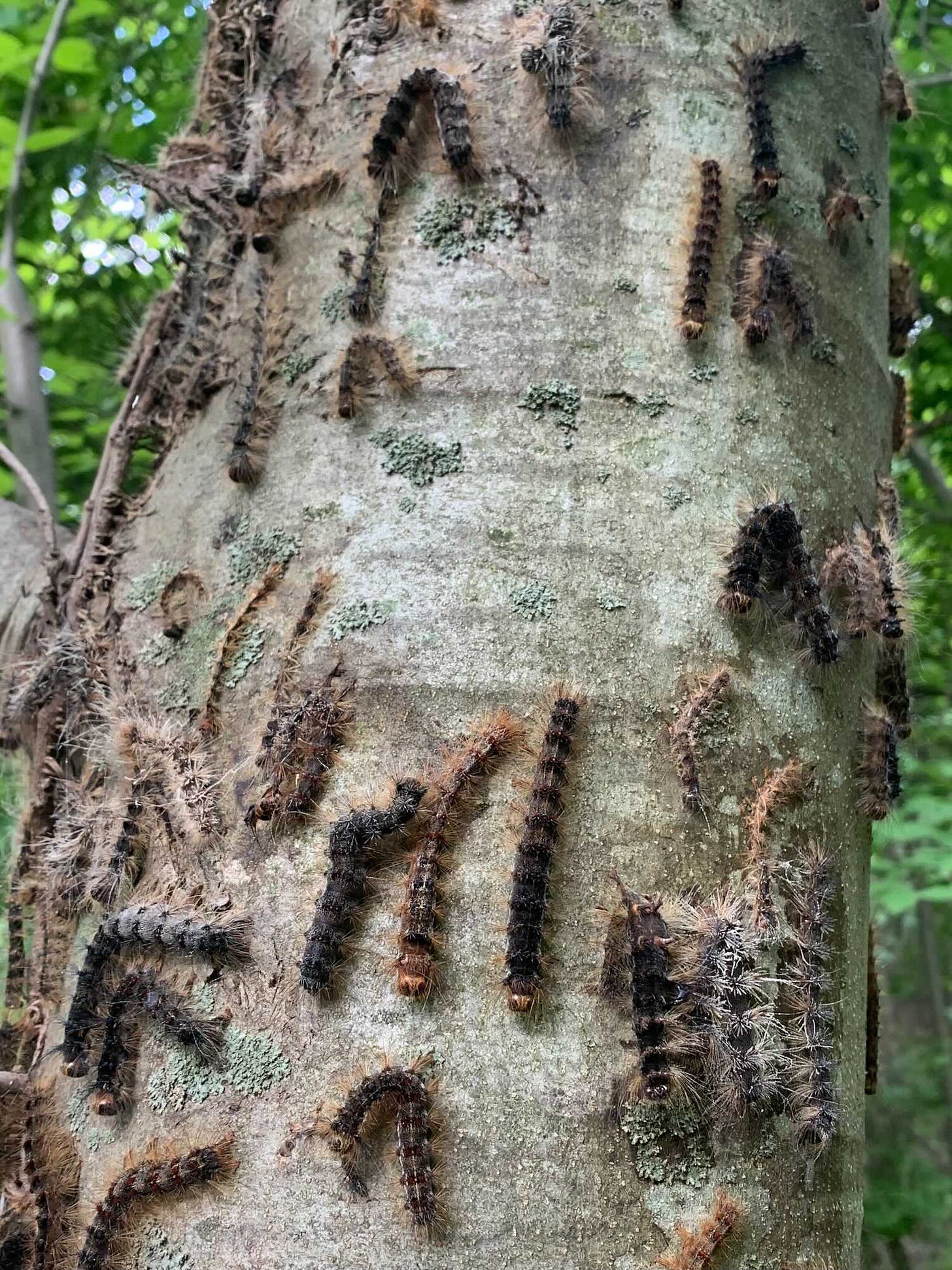Volunteers
I’m deep into prep work for Eastern States 100 (read more in Smiling Through at Mile 80), and that has me thinking a lot about volunteers. Volunteers are the lifeblood of a non-profit organization like ours, and the quality of our relationship with them is the main driver of our success. I suspect the principles that apply to volunteers at hundred-mile trail races apply equally to volunteers anywhere, so maybe my observations will be helpful beyond the world of ultra-running.
First, the term “volunteer” is much too broad. Yes, each of these people has come forward and offered to help, but if your understanding stops there, you’re likely to fail. Each individual brings a different combination of talents, resources, volume of time, and level of commitment, and the organization must recognize and honor those differences.
For me, it helps to think in terms of whether a person is a time volunteer or a task volunteer.
Time volunteers agree to give a certain amount of time, and they generally will do whatever is needed and pour their heart into it, but when their time is up, it’s up and they must leave whether the task is complete or not. In return the organizer agrees not to ask for more than that, and to have things well-organized in a way that allows that commitment of time to be a valuable contribution towards a greater whole.
Task volunteers agree to complete a certain task, fill a certain role, accept a certain responsibility, and they are bound by the parameters of that task or role or responsibility, rather than by a certain quantity of time. As a result, their time contribution tends to be greater, and their efforts tend to be more integral to the success of an event.
It’s tempting to view task volunteers as more important than time volunteers, but the fact is that both are critical, that most events like this would not succeed without both of them, and in healthy organizations there is a comfortable interaction and a healthy respect of each for the other.
These are not fixed statuses. Today’s time volunteer, constrained by job and family and other commitments, might a few years from now take on a task role instead. Likewise today’s task volunteer might gracefully step into a smaller time-role next year. In a healthy organization or a healthy community that relies on volunteerism, this mix is recognized and respected: volunteers can trust the organization not to push, and the organization can trust the volunteers to do what they’ve said they’ll do. That basic agreement, and how well we honor it, sets the tone for the entire organization and creates a healthy atmosphere where roles are fluid, where people feel free to take on different tasks and don’t hesitate to take their turn at a bigger job for fear they’ll be stuck there.
It’s easy to lose sight of that ideal in the heat and urgency of an event that’s rushing up, or happening right now. We might not realize it, but it’s easy to start treating our volunteers as a resource to be mined. And if we do that, we use them up. They’ll quietly slip away, maybe without ever complaining, and we’ll be left to go looking for the next person to use up.
Treat this as a perennial garden though, and it can be very different. Nurtured properly, volunteers come back year after year, and the organization becomes better, stronger, more vibrant and self-sustaining with the passage of time. Build that kind of atmosphere, establish systems that enable that kind of volunteer culture, and people will modulate their participation from year to year as part of a larger system in which a whole lot of good people are all playing their parts and taking their turns according to their personal situations, all for the greater good.
And that is a beautiful thing to be part of.
Update: A Scourge Averted
Back in Bracing, Forging, Flowing I worried about the gathering onslaught of the gypsy moth caterpillars I was seeing every day in the local forests. My fear was valid, but a couple days after I published, things changed, and I started seeing large groups of trees that looked like this:
It looks bad, but those caterpillars are all dead, apparently killed by a double-whammy combination of viral and fungal enemies that must have had just the right weather to thrive. They have given us a reprieve.
Supposedly, the v-shaped deaths are from the virus, and the straight up and down ones are from the fungus. It’s frightening that there are some many of them (most of the tree trunks look like this, at least in certain places), but it’s also kind of spectacular in its gruesomeness.










